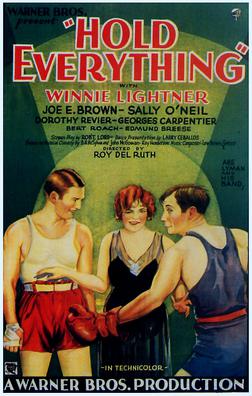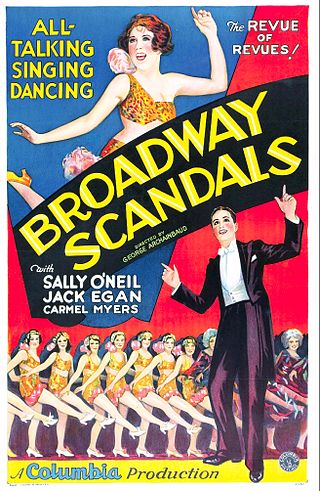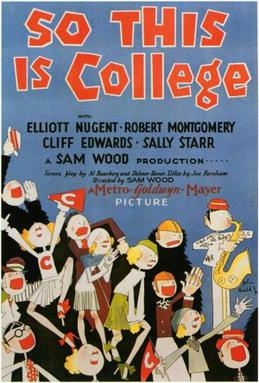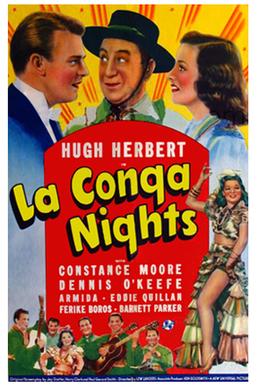
A sound film is a motion picture with synchronized sound, or sound technologically coupled to image, as opposed to a silent film. The first known public exhibition of projected sound films took place in Paris in 1900, but decades passed before sound motion pictures became commercially practical. Reliable synchronization was difficult to achieve with the early sound-on-disc systems, and amplification and recording quality were also inadequate. Innovations in sound-on-film led to the first commercial screening of short motion pictures using the technology, which took place in 1923. The sound film was also played with organs or pianos in the actual movie to represent sound.

Vitaphone is a sound film system used for feature films and nearly 1,000 short subjects made by Warner Bros. and its sister studio First National from 1926 to 1931. Vitaphone is the last major analog sound-on-disc system and the only one that was widely used and commercially successful. The soundtrack is not printed on the film, but issued separately on phonograph records. The discs, recorded at 33+1⁄3 rpm and typically 16 inches (41 cm) in diameter, are played on a turntable physically coupled to the projector motor while the film is projected. Its frequency response is 4300 Hz. Many early talkies, such as The Jazz Singer (1927), used the Vitaphone system. The name "Vitaphone" derived from the Latin and Greek words, respectively, for "living" and "sound".

The Movietone sound system is an optical sound-on-film method of recording sound for motion pictures that guarantees synchronization between sound and picture. It achieves this by recording the sound as a variable-density optical track on the same strip of film that records the pictures. The initial version was capable of a frequency response of 8500 Hz. Although modern sound films use variable-area tracks instead, modern motion picture theaters can play a Movietone film without modification to the projector. Movietone was one of four motion picture sound systems under development in the U.S. during the 1920s, the others being DeForest Phonofilm, Warner Brothers' Vitaphone, and RCA Photophone, though Phonofilm was principally an early version of Movietone.
Phonofilm is an optical sound-on-film system developed by inventors Lee de Forest and Theodore Case in the early 1920s.

Hold Everything is a 1930 American Pre-Code film. It was the first musical comedy film to be released that was photographed entirely in early two-color Technicolor. It was adapted from the DeSylva-Brown-Henderson Broadway musical of the same name that had served as a vehicle for Bert Lahr and starred Winnie Lightner and Joe E. Brown as the comedy duo. The romantic subplot was played by Georges Carpentier and Sally O'Neil. Only three songs from the stage show remained: "You're the Cream in My Coffee", "To Know You Is To Love You", and "Don't Hold Everything". New songs were written for the film by Al Dubin and Joe Burke, including one that became a hit in 1930: "When The Little Red Roses Get The Blues For You". The songs in the film were played by Abe Lyman and his orchestra.

Edward Quillan was an American film actor and singer whose career began as a child on the vaudeville stages and silent film and continued through the age of television in the 1980s.
Ko-Ko Song Car-Tunes, Song Car-Tunes, or Sound Car-Tunes, is a series of short three-minute animated films produced by Max Fleischer and Dave Fleischer between May 1924 and September 1927, pioneering the use of the "Follow the Bouncing Ball" device used to lead audiences in theater sing-alongs. The Song Car-Tunes also pioneered the application of sound film to animation.

Optical sound is a means of storing sound recordings on transparent film. Originally developed for military purposes, the technology first saw widespread use in the 1920s as a sound-on-film format for motion pictures. Optical sound eventually superseded all other sound film technologies until the advent of digital sound became the standard in cinema projection booths. Optical sound has also been used for multitrack recording and for creating effects in some musical synthesizers.
Finding His Voice (1929) is a short film, created as an instructional film on how the Western Electric sound-on-film recording system worked. Recording stars Billy Murray and Walter Scanlan, uncredited, provide the speaking and singing voices. Murray also provided the voice for the Fleischer Studios character Bimbo.

The Battle of the Sexes is a 1928 American sound comedy film directed by D. W. Griffith. While the film has no audible dialog, it was released with a synchronized musical score with sound effects using both the sound-on-disc and sound-on-film process. The film starred Jean Hersholt, Phyllis Haver, Belle Bennett, Don Alvarado, and Sally O'Neil. It was released by United Artists. The film was a remake by Griffith of an earlier film he directed in 1914, which starred Lillian Gish. Both films are based on the novel The Single Standard by Daniel Carson Goodman; the story was adapted for this production by Gerrit J. Lloyd.

Broadway Scandals is a 1929 American Pre-Code musical film.

Young April is a 1926 American silent romantic comedy film directed by Donald Crisp, and starring Bessie Love, Joseph Schildkraut, and Rudolph Schildkraut. The film was produced by Cecil B. DeMille and distributed by Producers Distributing Corporation. The film has survived and has been released on home video.

Lucky Boy is a 1929 American sound part-talkie musical comedy-drama film directed by Norman Taurog and Charles C. Wilson and starring George Jessel. In addition to sequences with audible dialogue or talking sequences, the film features a synchronized musical score, singing and sound effects along with English intertitles. The sound was recorded using the Tiffany-Tone system using RCA Photophone equipment. The film's plot bore strong similarities to that of the hit 1927 film The Jazz Singer, which had originally been intended to star Jessel before Al Jolson took over the role.

The Flying Fool is a 1929 aviation-themed film produced and distributed by Pathé Exchange as both a silent film and sound film just as Hollywood was transitioning to filming with sound. Tay Garnett directed and William Boyd, Russell Gleason and Marie Prevost starred.

So This Is College is a 1929 American pre-Code comedy film directed by Sam Wood, written by Al Boasberg, Delmer Daves and Joseph Farnham, and starring Elliott Nugent, Robert Montgomery in his film debut, Cliff Edwards, Sally Starr and Phyllis Crane. It was released on November 8, 1929 by Metro-Goldwyn-Mayer.

The Flying Marine is a 1929 American action film directed by Albert S. Rogell and starring Ben Lyon, Shirley Mason and Jason Robards Sr. The film centers around a tale of brothers romancing the same girl. The Flying Marine was released in both sound and silent versions.

La Conga Nights is a 1940 American comedy film directed by Lew Landers and written by Jay Dratler, Harry Clork and Paul Gerard Smith. The film stars Hugh Herbert, Dennis O'Keefe, Constance Moore, Ferike Boros, Eddie Quillan and Armida. The film was released on May 31, 1940, by Universal Pictures.
Noisy Neighbors is a 1929 American sound part-talkie comedy film directed by Charles Reisner and starring Eddie Quillan, Alberta Vaughn and Jane Keckley. In addition to sequences with audible dialogue or talking sequences, the film features a synchronized musical score and sound effects along with English intertitles. The sound was recorded using the RCA Photophone sound system.
The Land of Missing Men is a 1930 American pre-Code Western film written and directed by John P. McCarthy – with a script from Bob Quigley – and produced by Trem Carr for his studio Trem Carr Productions. Starring Bob Steele, Al St. John, Eddie Dunn, Caryl Lincoln, Al Jennings and Fern Emmett, the plot concerns Steve O'Neil (Steele) and his partner, Buckshot who, after being accused of holding up a stagecoach in cattle country, are asked by a dying man to save his daughter from a planned stagecoach holdup.
Helen Lynd, also known as Helene Lynch, was an American actress and comedienne active on stage and in film.














